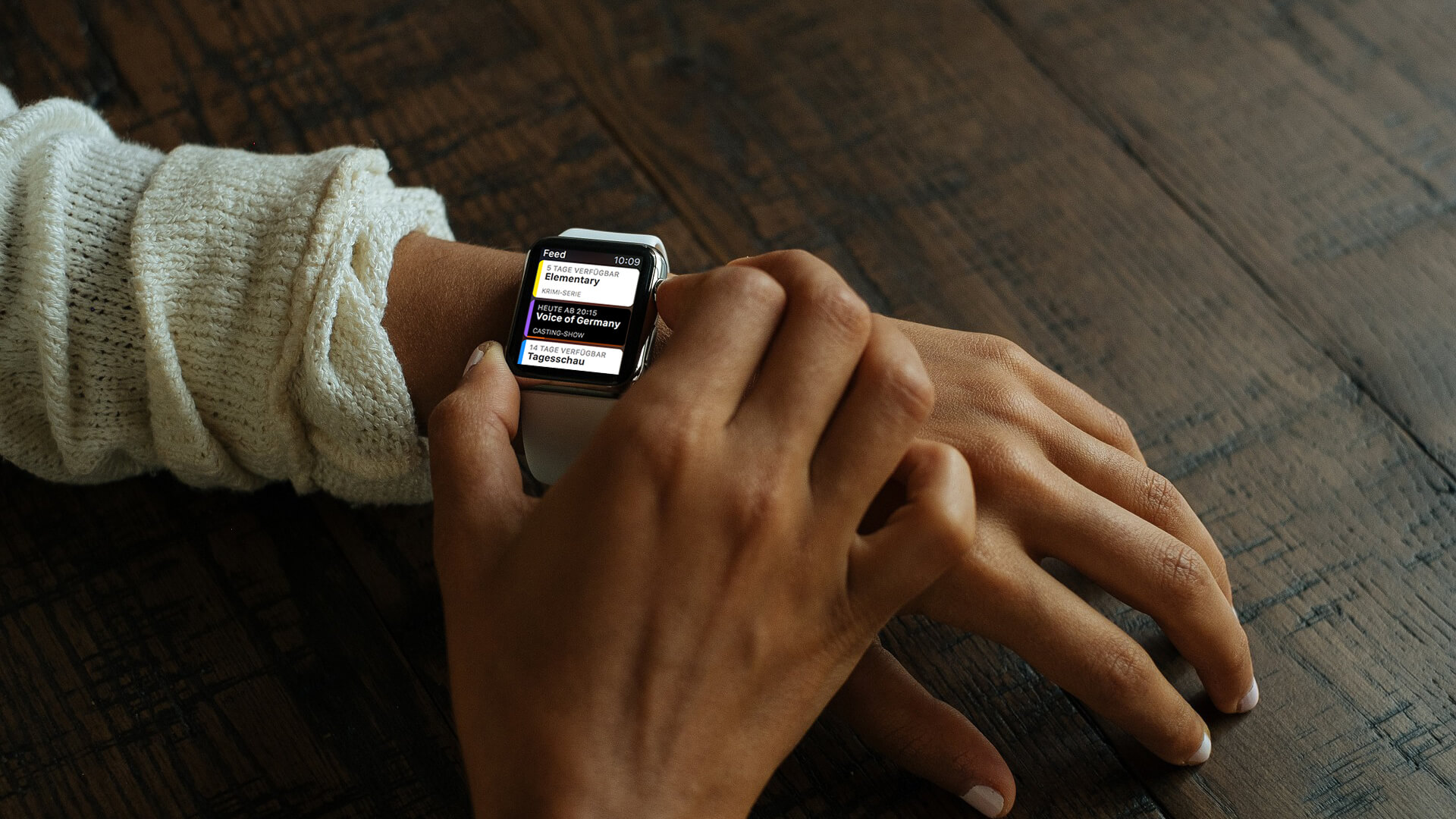
The problem: everything is connected but nothing communicates
The TV still is the central meeting point for families. It's used to be close to the favourite hero, to break out of reality, to inform yourself, to be entertained or simply to switch off. And although many households have high-performance and network-capable receivers, those are still far away from understanding the preferences of their user and respond to them. While receivers are indeed capable of knowing, when the TV is used, which broadcast is seen regularly with it and which episodes where missed by the user, they doesn't support their users in any way and – to be fair enough – behave quite stupid. The state of television has not changed in spite of the digitisation.
With our concept we seeked to show HD + a possible solution for more intelligent TVs.
The challenge: a whole new device
The launch of the Apple Watch was the trigger for the decision to present HD+ our vision of television. A networked device, which is much more closely tied to the user's body than the smartphone, generates so many new possibilities. At the same time, the watch was the real challenge. At the end of 2014, only a few people had actually been able to test the device – if so, then only for a few minutes. No one knew what was technically possible, how to interact with the Watch, and what real use it would bring to people. Design Guidelines had not yet been released and design decisions had to be made due to shaky video recordings, screenshots and some assumptions of the community.

Screendesign of the HD+ Apple Watch App
The solution: The Watch as an mediator
With its TV Guide app HD+ is already strongly represented in the App Store. It provides a clear and supportive overview of the current and future TV program. At the same time, the app is capable of creating a profile of the user, make it possible to favour broadcasts and gives recommendations.
Our goal wasn't porting the TV Guide app 1:1 to the Watch, but simplify it strictly and make use of the strengths of the device. Smartwatches are very well suited to provide its carriers with up-to-date relevant information, without having the user to interact actively with it. We considered the Watch as a fast mediator between TV and user. It informs him/her about what he/she is able to watch on TV and what will be running in the primetime. HD+ customers can also have a look at their feed and see what interesting films and programs are available in the media library.
Without having to turn on the TV or get the iPhone out, the user can thus inform him- or herself about what he/she can expect on TV.
The Prototype
I've built the prototype with FramerJS. It's quite dynamic and can be filled with real data.
Context as a partner
Because the Watch app is meant to communicate with the receiver via the smartphone app, we can tell the TV whether the user is on the same network (and thus at home) or not. Because of this knowledge, the Watch is able to customise notifications and actions accordingly to the context.
If the user is at home, but not watching TV, we give him/her a tap and kindly inform that his favourite broadcast is about to start. With his/her watch the user is then able to turn on his television directly and rewind to the beginning of the episode.
In another scenario, the user's favourite broadcast might start in five minutes. The user is neither at home nor has he/she planned a recording in advance. So the Watch knocks and ask if he/she wants to take up the new episode of Elementary? And as soon as he/she is back at home, he/she will get reminded by the Watch that a new episode is waiting for him/her already.
The TV is an entertainment medium and is used by people, especially if they want to relax and to be entertained. With the watch, HD+ is able to expand the presence of the television while providing a useful service for its customers. By using simple interactions just at the right moment, we can use the Watch as an intermediary, that raises the TV to a new level and strengthen its quality of interaction.